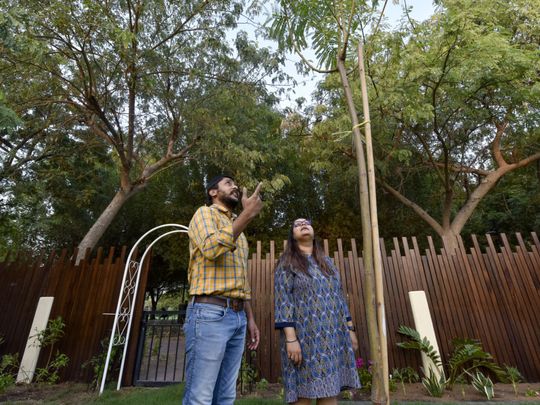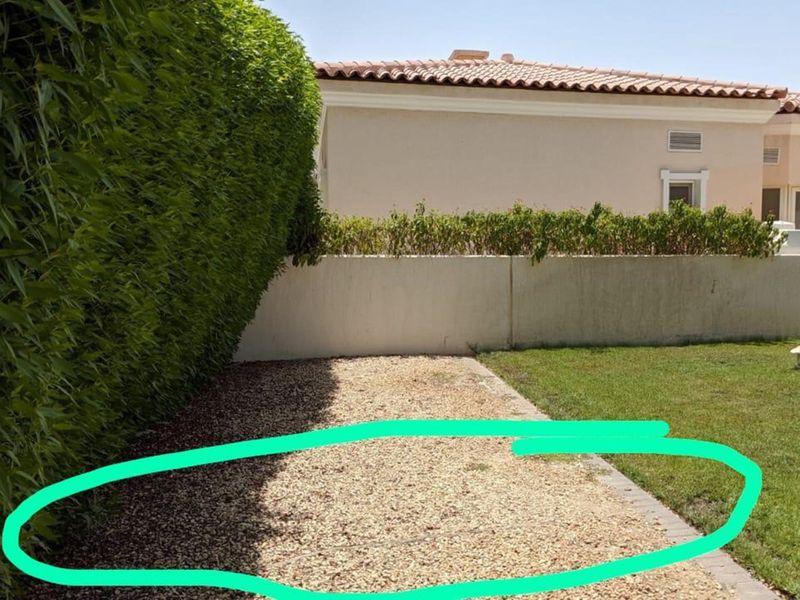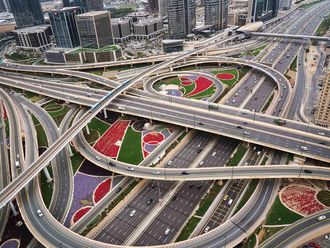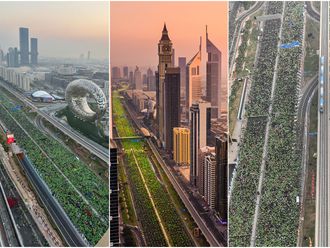
Dubai: When Indian expats Pallav Singhvi and Rubanjit Narwal decided to buy a villa in the UAE recently, one of the factors that attracted the couple was indeed the lush green environment in the community.
However, they had to cut down about two dozen trees in the villa’s garden with a heavy heart. The reason? They were the Damas trees — the roots of which were invading the foundation of the villa.
See more
Neha Gandhi and Shubhi Biju, owners of Dekur, who took up the landscape and outdoor-indoor décor works for the villa earlier this month, said the dense, beautiful trees were unfortunately about to affect the levelling of the ground and the foundation of the villa.
“Those trees were all along one part of the compound wall, stretching about 25m. You could visibly see the roots growing out of the base, all intertwined and extending towards the wall. They were spreading up to two metres towards the house. Luckily, there was some distance between the trees and walls. In a few more years, it would have damaged the foundation,” said Gandhi.
Hence, the first job they undertook when they started the landscaping project was felling the Damas trees. “It was actually sad to bring them down. The trees were planted by the tenants of the previous owner of the villa. The new owners had to spend quite a significant amount of money to bring them down and transport them away,” said Biju.
Why is Damas dangerous?
Civic bodies across the emirates have time and again reminded residents about the dangers of Damas trees. While Dubai residents have long been getting the Damas trees felled following a concerted campaign by the authorities, Sharjah reportedly removed 25,000 Damas trees in the first six months of this year. Umm Al Quwain had also offered to remove the species from home gardens for free. Over the years, In 2018, 4,000 trees were uprooted in Ras Al Khaimah, which finally banned the sale of Damas seedlings by 2020.

Mainly used as an effective screen for the lawn area and privacy barriers along boundary walls, besides hedging in residential areas, Damas trees have increasingly wreaked havoc by damaging properties across the country for several years. While several home owners had to repair damaged properties, some residents have also been faced with massive bills as the Damas roots penetrated into water pipes and caused leakages.
In Dubai, Dubai Municipality launched a campaign to uproot the dangerous species and raise awareness about the menace they can create in residential areas in 2012. In the same year, thousands of Damas trees lining the streets and villas of several master-planned communities in New Dubai were felled to prevent damage to underground piping systems, pools, drains and boundary walls.
Evergreen and fast growing, Damas tree (Conocarpus lancifolius) is a treat to the eyes of nature lovers and a habitat for birds and insects. However, the creeping roots of the tree can wreak havoc in home gardens by causing damages to the foundation, underground pipelines, shower drains, boundary walls and swimming pools if not planted wisely, the civic body has warned.
* Indian beech or Pongam oiltree (Pongamia glabra)
* Roble, Trumpet trees (Tabebuia sp)
* Cuban Laurel, Indian Laurel Fig, Green Island Fig, Chinese Banyan (Ficus nitida)
* Chaste tree, chaste berry, Abraham’s balm, lilac chastetree, or monk’s pepper (Vitex agnus-castus)
* Royal Poinciana, Gulmohar, Flame tree (Delonix regia)
* Neem, nimtree, Indian lilac (Azadirachta indica)
Ranesh Bagchi, who lives in a gated community in Dubai, said he had to uproot three big Damas trees to safeguard his house. He said he was not aware of the dangers of the Damas tree until the developer asked homeowners in the community to remove them. “The landscapers had planted them. I am not sure if they were aware of the issues related to this tree those days. They grew fast and looked nice. But the nearby plants were not growing. That was a testimony of this tree’s impact though they had not yet damaged the property. After I removed them, all other plants started growing,” said Bagchi.
Nuisance to neighbours
Though tolerant of heat, drought and salt, this invasive species depletes water resources and absorbs nutrients from the soil, which prevents other plants from growing nearby. This has been another nuisance caused by Damas trees. Residents have complained about Damas trees in their neighbours’ premises affecting plants in former’s gardens and foliage falling into their premises as well.
Rani Suvarnan, who also lives in a villa, had to push her neighbours to uproot the Damas trees that they had planted around their house after the garden in her compound was badly affected by those trees. “There is no compound wall between our houses. Those trees blocked the sunlight from falling into my garden and their roots affected my lawn. They would absorb all the water from our garden. The grass and flowering plants in my garden were quickly affected. When I went to the Net, I found out that the Damas trees were the culprits. Then I had to raise my concerns with the community management and finally got rid of them after a lot of pushing.”
Meanwhile, Gandhi and Biju have planted alternative trees in the garden of the villa and they are also upcycling the wood logs from the uprooted Damas trees as log planters, lamps, chandeliers, coffee table, side table etc. “It is the responsibility of those who are uprooting any tree to plant some other tree,” said Gandhi.








